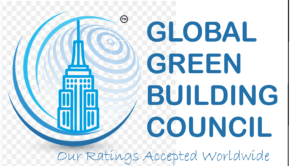Courtesy : www.ecoideaz.com
Green building innovation
Construction and civil engineering activities have experienced a boom due to the rapid improvement in building material. However, the current scenario in the booming construction industry has posed many challenges due to some unsustainable aspects of the highly polluting and the exhaustive nature of building materials. At the same time, it has also created opportunities for innovative and unconventional resources to emerge due to the widening gap in demand and supply of building materials, as well as the need for energy efficient and economical methods of construction.
Way back in 1990, the central government took the initiative to set up the Building Materials & Technology Promotion Council (BMTPC) to promote cost-effective, eco-friendly and energy efficient building materials and technologies.
Some of the natural materials that were considered by BMTPC as potentially viable building materials are: 27 types of agro-industrial wastes, by-products, residues, natural fibers, plantation timbers, including rice and wheat husk, bagasse from sugarcane, coir, hemp etc., that are cultivated on a large scale in Indian farms.
Among these innovative green building materials, some of them stand out due to their durability, cost effectiveness and local availability:
Bamboo as building material

Bamboo has been intensively utilized as a building material since ancient times. However, due to the scarcity of wood in recent years, bamboo has gained great importance as a source of renewable fiber as a suitable alternative to wood. Particularly, bamboo is suitable for low cost housing in earthquake-prone regions due to its sturdiness and versatility. This versatile forest produce lends itself to be manufactured into mat-based industrial products such as bamboo mat board, bamboo mat veneer composite, bamboo mat molded products, bamboo mat corrugated sheet for roofing, etc.
Among these, the bamboo mat corrugated sheet is an ideal substitute for asbestos and galvanized steel sheets for roofing purposes. The Indian Plywood Industries Research & Training Institute (IPIRTI) has developed this technique, which has proved to be a boon for the housing industries among North Eastern states. Since corrugated sheets are most versatile for roofing, the development of corrugated sheets from bamboo mats was taken up at IPIRTI, under a project sponsored by the BMTPC. Sinusoidal wave platens have been designed for hot pressing phenol formaldehyde resin coated and preservative treated bamboo mats into corrugated sheets. These sheets are environment friendly, energy efficient and possess good fire resistance as well.
Rice Husk Ash Concrete

Rice Husk Ash (RHA) produced after burning of rice husks can be used as an admixture for concrete. RHA has high reactivity and pozzolanic property, which improves the workability and solidity of the cement. Portland cement contains 60-65% Calcium oxide and, upon hydration, a considerable portion of lime is released as free Calcium Hydroxide. This is primarily responsible for the poor performance of Portland cement concretes in acidic environments. Silica present in Rice husk ash combines with the calcium hydroxide resulting in excellent resistance to acidic environments.
RHA concrete also reduces heat evolution during slaking, increases strength, impermeability and durability by strengthening the transition zone, modifying the pore-structure and also plugs the voids in the hydrated cement paste through the pozzolanic reaction. Minimizing the alkali-aggregate reaction, it also reduces expansion and distills pore structure and hinders diffusion of alkali ions to the surface of aggregate by micro-porous structure. Silica in the RHA combines with the calcium hydroxide resulting in excellent resistance to acidic environments. RHA mixed concrete has been found to be very workable and durable based on several tests. RHA-concrete can prove to be a boon for the cement industry in India because of the large production of paddy across the country.
Plastic Bricks

The concept of plastic bricks first came up in Africa when in an experimental project financed by the European Union, plastic bags were melted and transformed into bricks with a cement mold saving both money and time. The plastic bags were used to fill the potholes in Niger in a way to solve the problem of waste disposal. These bricks are not only inexpensive but are also easily workable.
Plastic bricks have been extensively used in highway and railway infrastructure. Plastic from the millions of the bottles and bags are melted and molded in the form of bricks are used in the construction of the roads. This has considerably enhanced the elastic nature of the surface helping in more load-bearing capacity of highways. In India, this technology has been initiated on an experimental basis for railway sleepers, but was stopped since the danger to fire is a major concern.
Bagasse Particle Board

Bagasse is the residual pulp from sugarcane after the juice has been extracted. A considerable amount of excess bagasse generated from sugar mills is left to rot or burnt as fuel for boilers. This by-product is now being used as a substitute for wood in particle boards that are light and low cost. Bagasse-based composites offer potential as the core material for laminated floors, replacing high-density and expensive wood fiberboard. As such, bagasse does not have enough strength and water resistance to be used on its own. However, if it is made into a laminated particle board with resin as a bonding agent and wax as a dimensional stabilizer, then it can be used for laminated floor and furniture applications.
The widest application of bagasse is in the manufacture of particle boards as low-cost construction materials and for the furniture industries. IPIRTI has developed a technology for the manufacture of Bagasse particle boards, which emits less formaldehyde and meets the requirement of strength properties for medium density particle boards.
Usage of these innovative green building materials has considerably reduced


